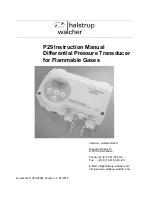
page 13
MARK-V FT-1000MP Operating Manual
Caution - Please Read!!
The MARK-V FT-1000MP is designed for use with
the FL-7000/VL-1000 when QSK operation with a
linear amplifier is desired. If you are using a differ-
ent amplifier, do not attempt QSK operation with
the linear if its switching circuitry requires that the
MARK-V FT-1000MP’s relay be enabled. Using
pins 2 and 8 of the BAND DATA jack for other
amplifiers will not work unless the control line sig-
nals are carefully matched, and damage may re-
sult otherwise.
During linear operation, be sure to account for the
MARK-V FT-1000MP’s maximum power capabil-
ity of 200 Watts, and take care not to over-drive
your linear amplifier.
Your transceiver’s warranty does not cover dam-
age resulting from improper connections to this
jack, so if you are not sure of the linear amplifier’s
break-in capabilities or switching requirements, the
safest approach is to enable the relay, use the TX
GND jack (after setting the LIN switch to the “ON”
position) and resort to non-QSK operation. This will
help prevent possible damage to the amplifier or
transceiver.
L
INEAR
A
MPLIFIER
I
NTERFACING
A
BOUT
ALC
The MARK-V FT-1000MP provides an external ALC
jack on the rear panel (RCA-type jack) for input of Au-
tomatic Level Control voltage from a linear amplifier.
ALC voltage is used to provide dynamic control of
the output of the transceiver, so as not to provide more
drive than is needed for full amplifier output. The ALC
control voltage range is 0 to –4 V DC, with the voltage
going more negative as the amplifier’s drive require-
ments are approaching fulfillment.
The MARK-V FT-1000MP’s ALC system is very typi-
cal of designs in the amateur radio industry, and con-
sequently is compatible with many manufactured and
home-built amplifiers. However, ALC voltage may be
generated by an amplifier in a manner incompatible
with efficient ALC operation in the MARK-V FT-1000MP,
and it is important that you recognize the differences in
amplifier ALC circuits before proceeding with ALC line
connection.
r
ALC circuits which detect
Power Output
from the
amplifier, and generate negative-going ALC control
voltage when maximum output power has been re-
alized, will generally work properly with the MARK-
V FT-1000MP.
The exact amount of ALC voltage fed to the MARK-
V FT-1000MP can usually be adjusted via a poten-
tiometer on the rear panel of the amplifier.
r
ALC circuits which detect
Amplifier Tube Grid Cur-
rent
, and generate ALC voltage when excessive
grid current is present, may not work well with the
MARK-V FT-1000MP and other similar transceiv-
ers, as the ALC voltage may be generated because
of amplifier mis-tuning not related to an excessive-
drive condition. With amplifiers deriving their ALC
voltage in this manner, we recommend that you
not
connect the ALC line, and rather let the amplifier’s
protection circuitry manage its ALC requirements
internally.
A
CCESSORY
I
NSTALLATION
















































